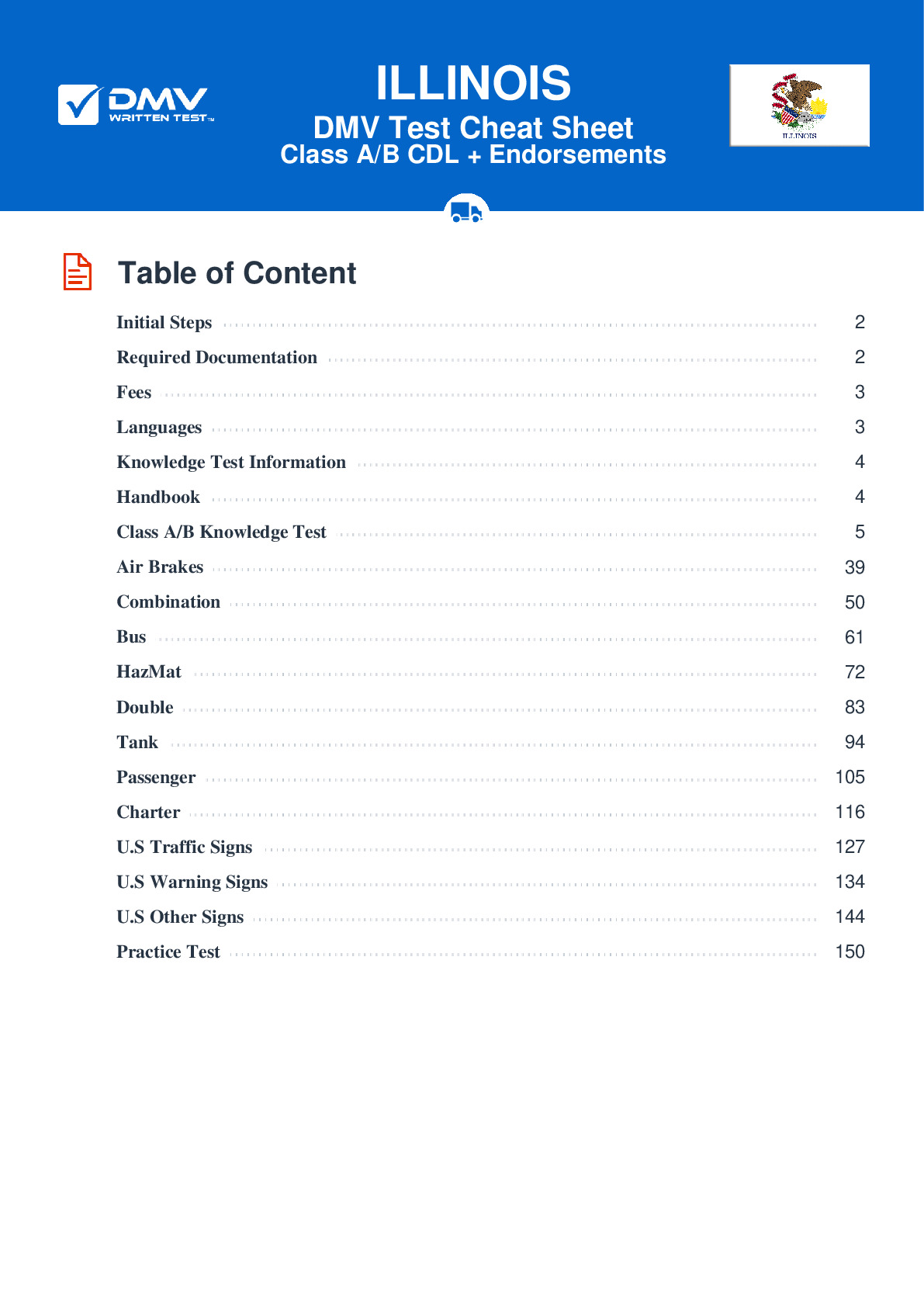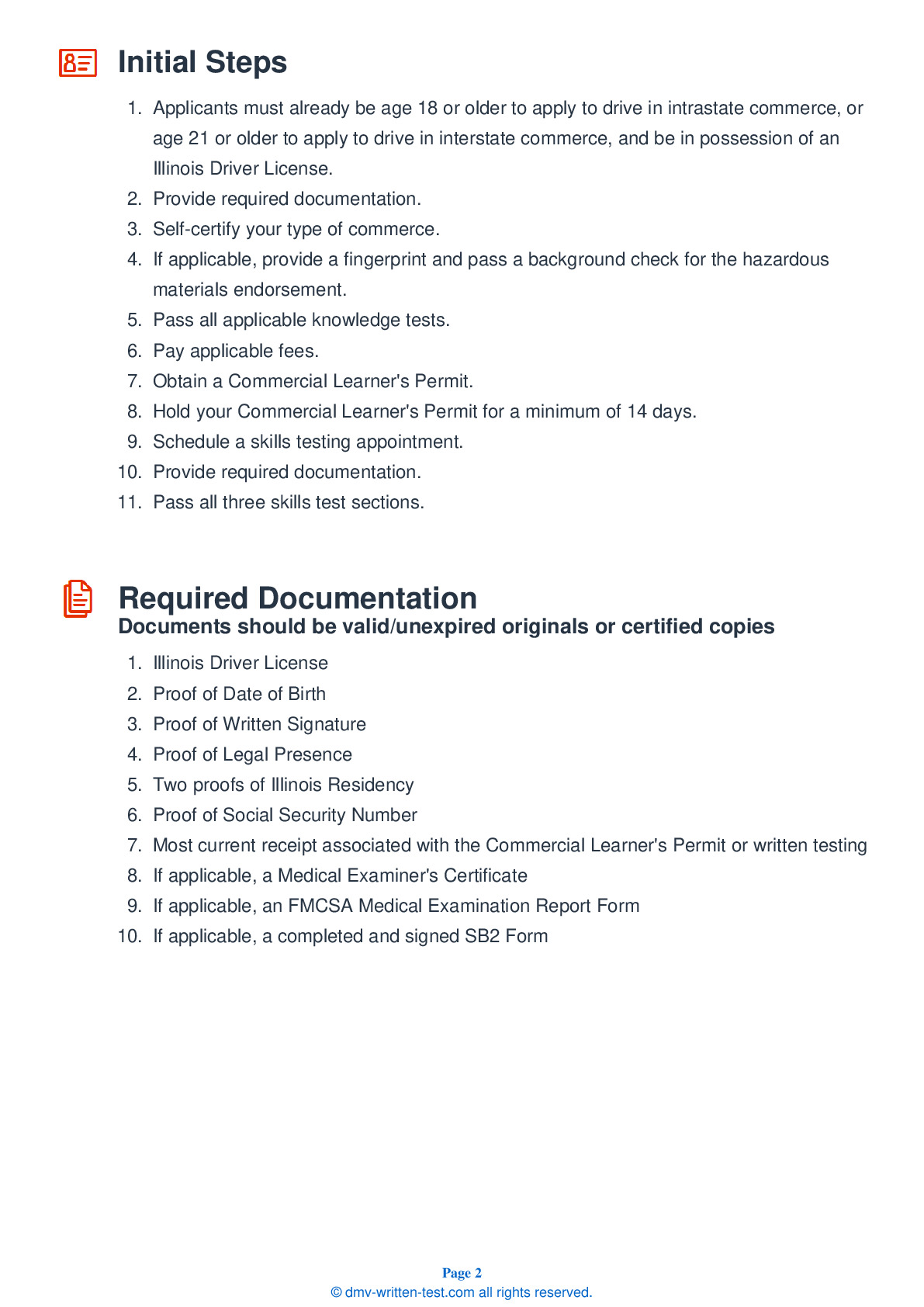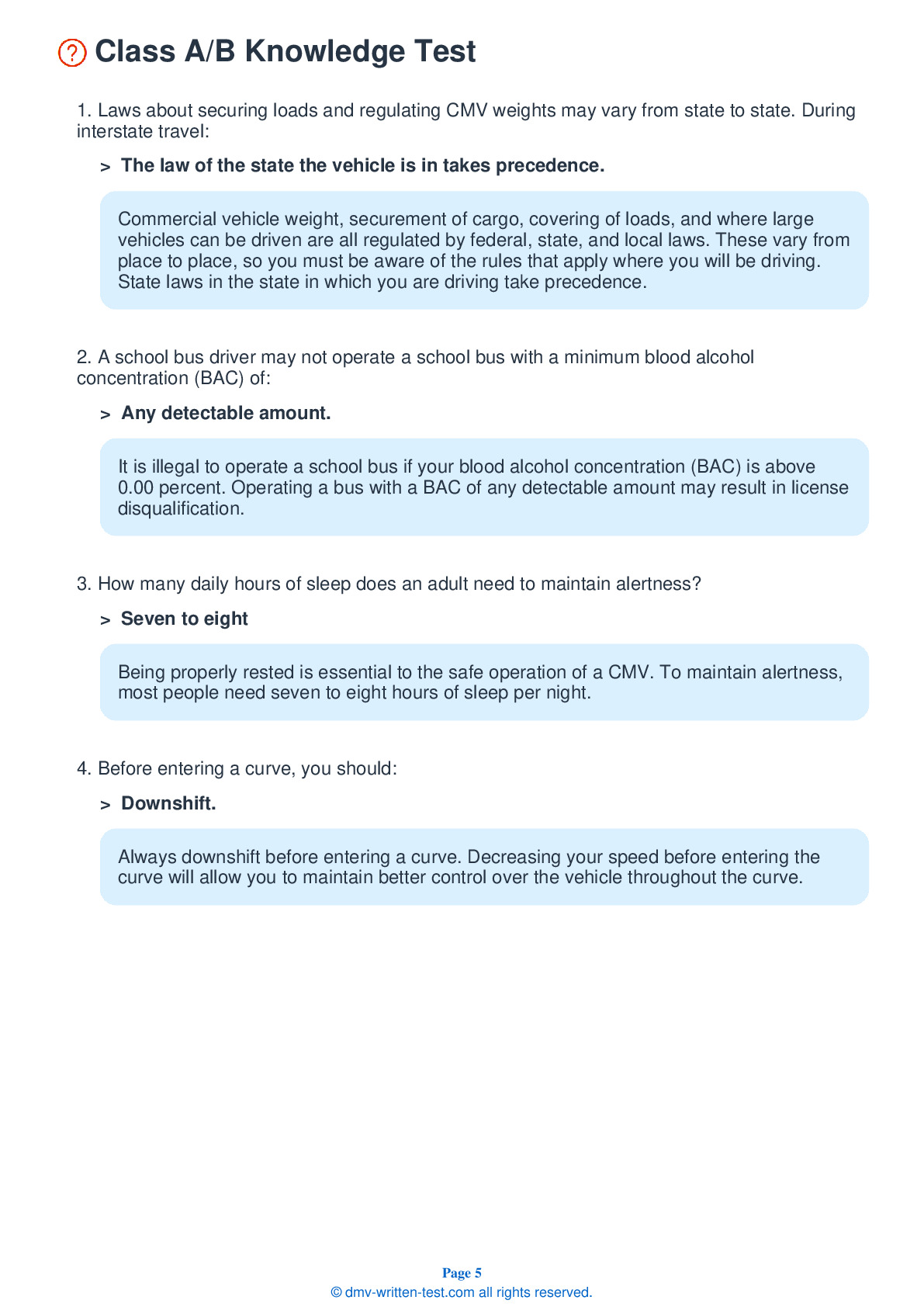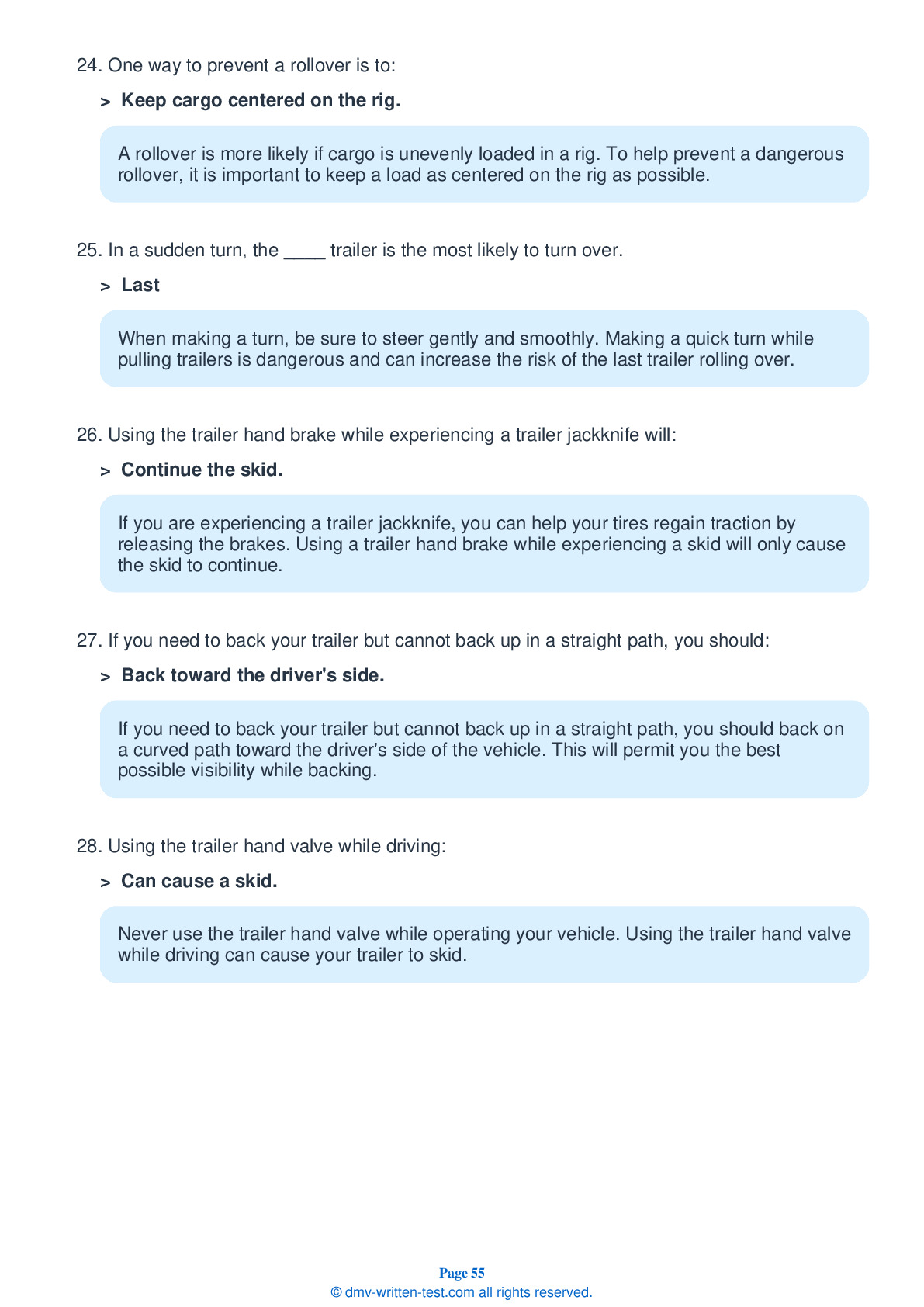Combination
All applicants who are applying for a Class A CDL should be prepared to take the Combination test. This test covers information found in Section 6 of the Illinois Commercial Driver's License Study Guide. Section 6 provides the information needed to safely operate tractor-trailers, doubles, triples, and straight trucks with trailers. The test is made up of 20 multiple-choice questions, and applicants will need to correctly answer a minimum of 16 questions to pass. The Combination test is not a replacement for the Double/Triple endorsement test.
Number of Question
Passing Score
8. What is off-tracking?
Explanation
When a vehicle goes around a corner, the rear wheels follow a different path than the front wheels. This is known as off-tracking, or "cheating."
9. While inspecting a coupling, you should go under the trailer and:
Explanation
While inspecting a coupling, you should go under the trailer and look into the back of the fifth wheel. Ensure that the fifth wheel jaws are secured around the shank of the kingpin.
10. When entering or crossing traffic while driving a combination vehicle, it is especially important that you:
Explanation
Combination vehicles require more space on the road than other vehicles. When entering or crossing traffic while driving a combination vehicle, it is especially important that there is a large enough gap in traffic for you to safely do so.
11. When lightly loaded, combination vehicles:
Explanation
When a combination vehicle is lightly loaded, it may have poor traction. It is very easy for wheels to lock up on lightly-loaded vehicles when they are being stopped.
12. When driving a trailer with ABS, you should:
Explanation
When driving a tractor-trailer combination equipped with an Anti-Lock Braking System (ABS), you should brake in the same manner that you would if operating a vehicle without ABS.
13. An air supply control lever should be in its "normal" position when you are:
Explanation
Tractor protection controls in older vehicles may be operated by levers instead of knobs. If an air supply control is set in its "normal" position, it is properly set for you to pull a trailer.
14. An air supply control in its "emergency" position will:
Explanation




